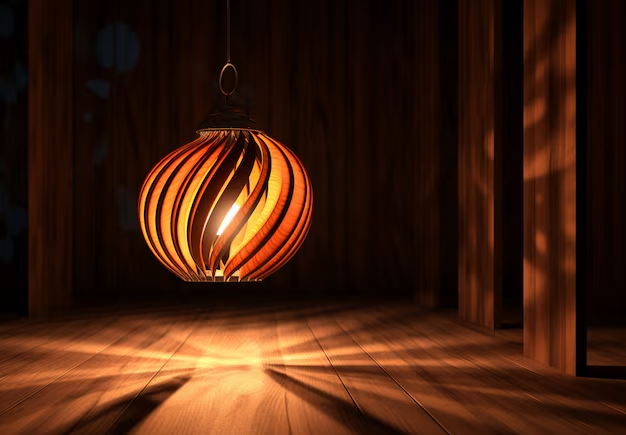In the ever-evolving world of interior design, lighting plays a critical role in creating the ambiance and functionality of a space. While traditional light sources like chandeliers, pendant lights, and floor lamps have long been the mainstay of home lighting, heat lamps are increasingly making their way into the conversation. Originally used in commercial settings and for specific functional purposes, heat lamps are now being appreciated for their potential to blend style with practicality in home interiors.
This blog will explore how heat lamps can be incorporated into various design styles and how they can provide both warmth and aesthetic appeal in different spaces.
The Evolution of Heat Lamps in Interior Design
Heat lamps have traditionally been associated with practical uses such as keeping food warm in restaurants or providing warmth in bathrooms. However, with advancements in technology and design, heat lamps have evolved into stylish fixtures that can complement a variety of interior styles. The trend of using heat lamps in residential spaces is driven by the desire for multi-functional design elements that enhance both the look and feel of a room.
1. Heat Lamps as a Design Element
The concept of using heat lamps as part of the decor rather than just as a functional device is gaining traction. Modern heat lamps come in a wide range of designs, from sleek and minimalist to bold and industrial, making them versatile enough to fit into any interior style.
- Aesthetic Appeal: Heat lamps now come in various finishes, such as brushed nickel, matte black, and polished brass, allowing them to blend seamlessly with existing decor. Whether you’re aiming for a modern, rustic, or industrial look, there’s a heat lamp design that can complement your space.
- Focal Points: In addition to providing warmth, heat lamps can serve as focal points in a room. For instance, a statement heat lamp placed above a dining table or in a living room can draw attention and add visual interest to the space.
2. Balancing Functionality with Style
While heat lamps add aesthetic value, their primary function is to provide warmth. This dual-purpose nature makes them particularly valuable in spaces where maintaining comfort is essential without compromising on style.
- Comfort and Coziness: Heat lamps are particularly useful in rooms that tend to get cold, such as bathrooms, sunrooms, or patios. By strategically placing heat in these areas, you can ensure that they stay warm and comfortable while still looking stylish.
- Energy Efficiency: Modern heat are designed to be energy-efficient, offering warmth without a significant increase in electricity consumption. This makes them a practical addition to any home, especially in areas where heating might be needed only occasionally.
3. Incorporating Heat Lamps into Different Interior Styles
The versatility of heat lamps allows them to be incorporated into a variety of interior design styles. Here are some ideas on how to blend heat lamps into different decor themes:
Modern and Minimalist Interiors
In modern and minimalist spaces, the emphasis is on clean lines, simplicity, and functionality. Heat lamps with a sleek and streamlined design are perfect for these interiors.
- Recessed Heat Lamps: For a minimalist look, consider recessed heat lamps that can be installed flush with the ceiling or wall. These provide warmth without taking up visual space, maintaining the clean and uncluttered aesthetic of the room.
- Monochromatic Finishes: Choose heat lamps in monochromatic finishes such as white, black, or metallic tones to complement the color scheme of a modern interior. These can serve as subtle accents that blend seamlessly into the design.
Industrial and Urban Chic
Industrial design is characterized by raw materials Exposed structures, and a mix of vintage and modern elements. Heat with an industrial edge can add warmth and character to these spaces.
- Exposed Bulb Heat Lamps: Heat with exposed bulbs and metal fixtures are ideal for industrial interiors. These lamps can be mounted on walls or ceilings, adding to the raw, unfinished look that is typical of industrial design.
- Freestanding Industrial Heaters: For a bold statement, consider freestanding heat with an industrial design. These can be placed in living rooms, dining areas, or even outdoor spaces to create a warm and inviting atmosphere.
Scandinavian and Cozy Interiors
Scandinavian design is all about creating a warm, cozy, and inviting environment, often with natural materials and a neutral color palette. Heat lamps can enhance this sense of coziness while fitting into the minimalist yet warm aesthetic of Scandinavian interiors.
- Wood and Metal Combinations: Choose heat lamps that combine wood and metal elements to complement the natural materials commonly found in Scandinavian design. These can be placed in living rooms, bedrooms. Or dining areas to create a warm and inviting atmosphere.
- Soft Lighting: Opt for heat with dimmable features to create soft, ambient lighting that enhances the coziness of the space. Pair these lamps with soft textiles like wool throws and cushions for a complete Scandinavian look.
Outdoor Living Spaces
Heat lamps are not just for indoor use; they can also be a valuable addition to outdoor living spaces. Whether you have a patio, garden, or balcony, heat lamps can extend the usability of these areas by providing warmth during cooler months.
- Freestanding Patio Heaters: Freestanding heat lamps are perfect for outdoor spaces. They can be placed near seating areas or dining tables to create a warm and comfortable environment for outdoor gatherings.
- Wall-Mounted Outdoor Heat Lamps: For smaller outdoor spaces, wall-mounted heat can provide targeted warmth without taking up floor space. These lamps are ideal for balconies or small patios where space is limited.
4. Tips for Choosing the Right Heat Lamp
When selecting a heat lamp for your interior, it’s essential to consider both its functional and aesthetic qualities. Here are some tips to help you choose the right heat lamp for your space:
- Determine the Purpose: Consider where you need the heat lamp and what you want it to accomplish. Is it primarily for warmth, or are you looking for a design element that also provides heat?
- Match with Existing Decor: Choose a heat lamp that complements your existing decor. Consider the color, finish, and style of the lamp to ensure it fits seamlessly into your space.
- Consider the Size and Placement: The size and placement of the heat lamp are crucial. Make sure the lamp is appropriately sized for the space and placed where it will be most effective in providing warmth.
- Energy Efficiency: Opt for energy-efficient models that offer the warmth you need without a significant increase in energy consumption. Look for with adjustable settings to control the level of heat and light.
- Safety Features: Ensure that the heat lamp has adequate safety features. Such as automatic shut-off mechanisms or heat-resistant materials, especially if it will be used in high-traffic areas or around children and pets.
Conclusion
Heat lamps offer a unique opportunity to blend style and function in interior design. Whether you’re looking to add warmth to a minimalist living room. Enhance the industrial vibe of your loft, or create a cozy outdoor retreat. Heat lamps can be an excellent addition to your home. By carefully selecting the right design, placement, and style. You can ensure that your heat lamps not only provide the warmth you need but also enhance the overall aesthetic of your space. As you explore the possibilities. Remember that the key to successfully incorporating heat lamps into your interior design is to strike the perfect balance between style and function.


